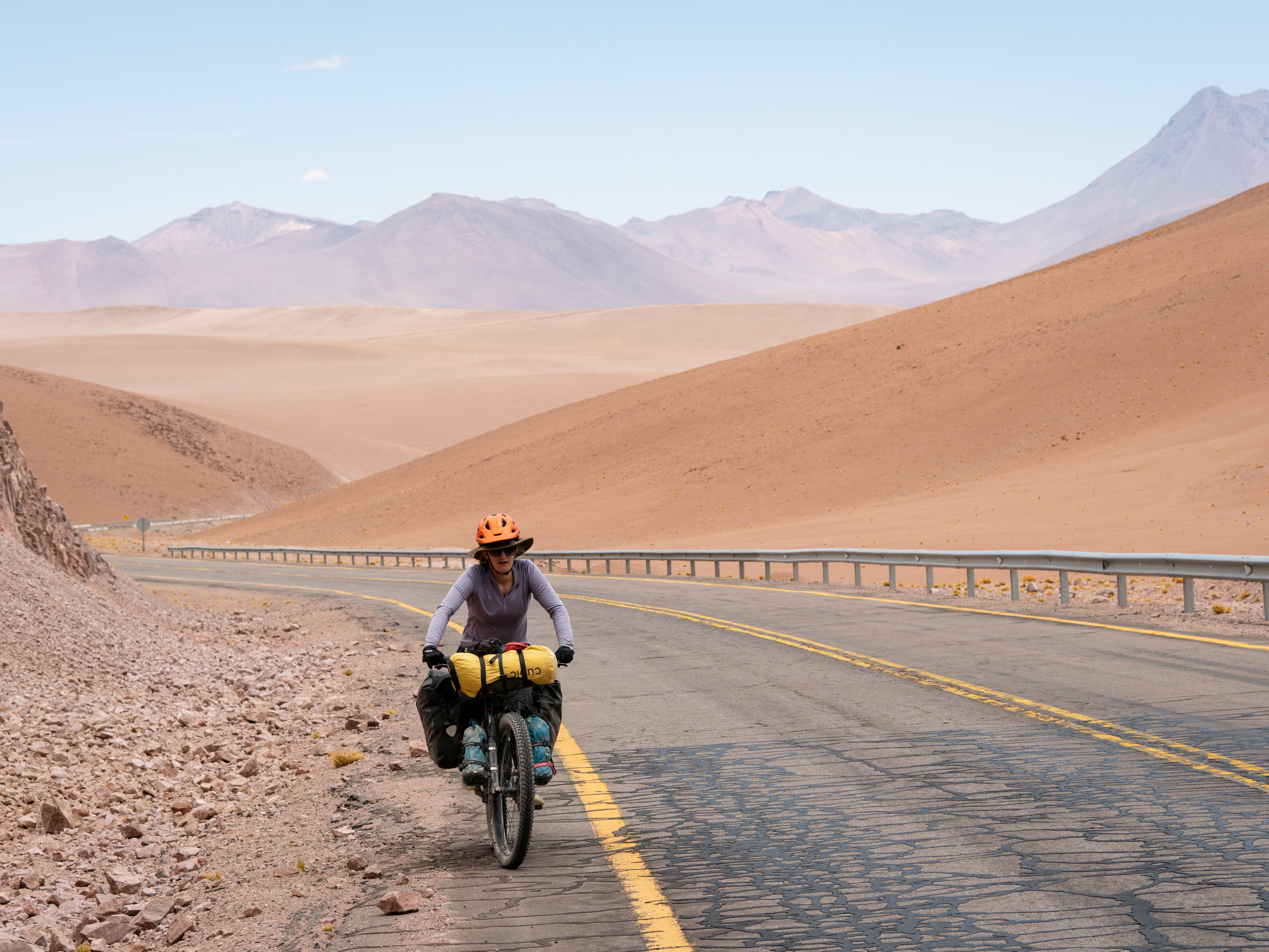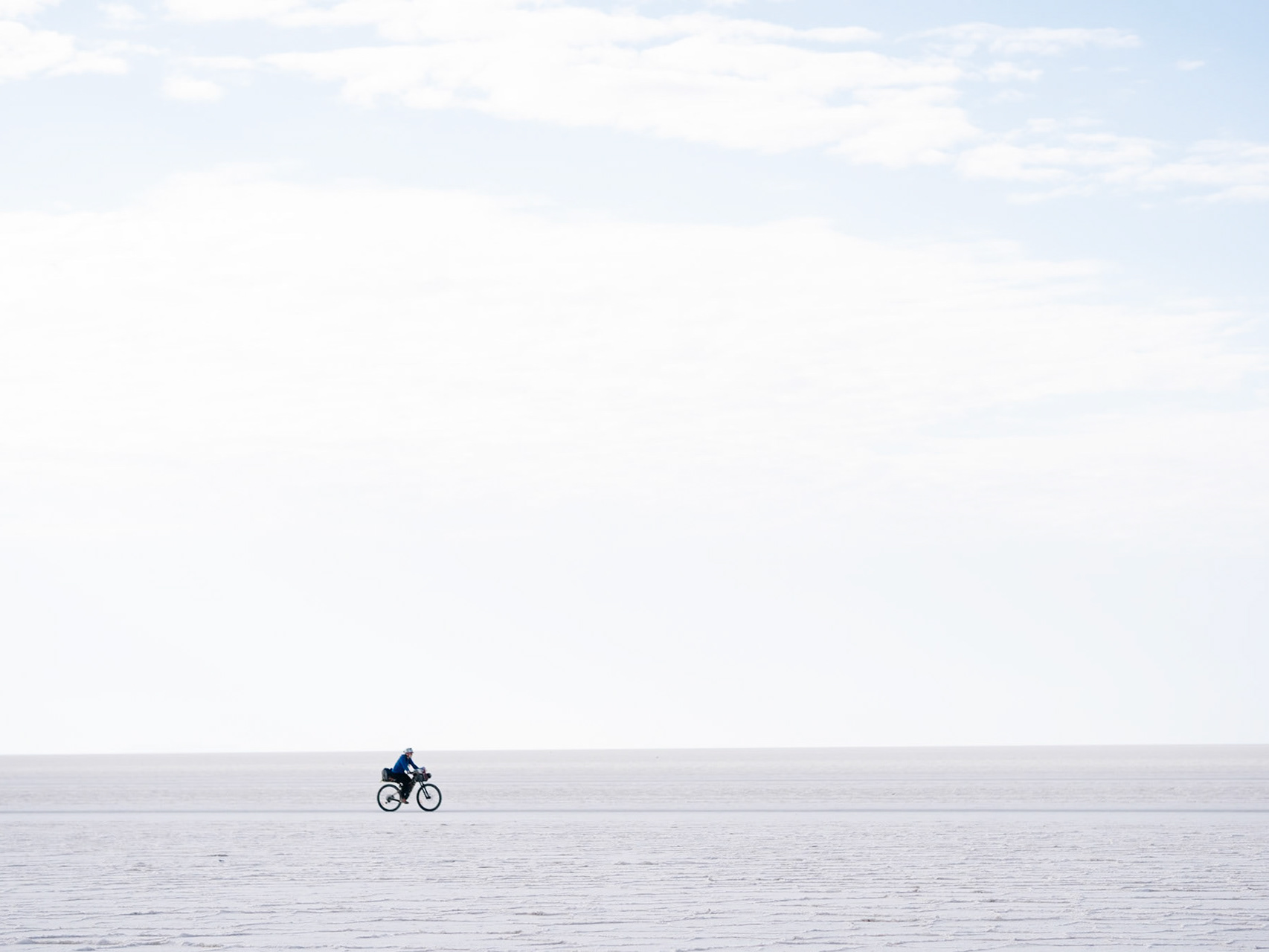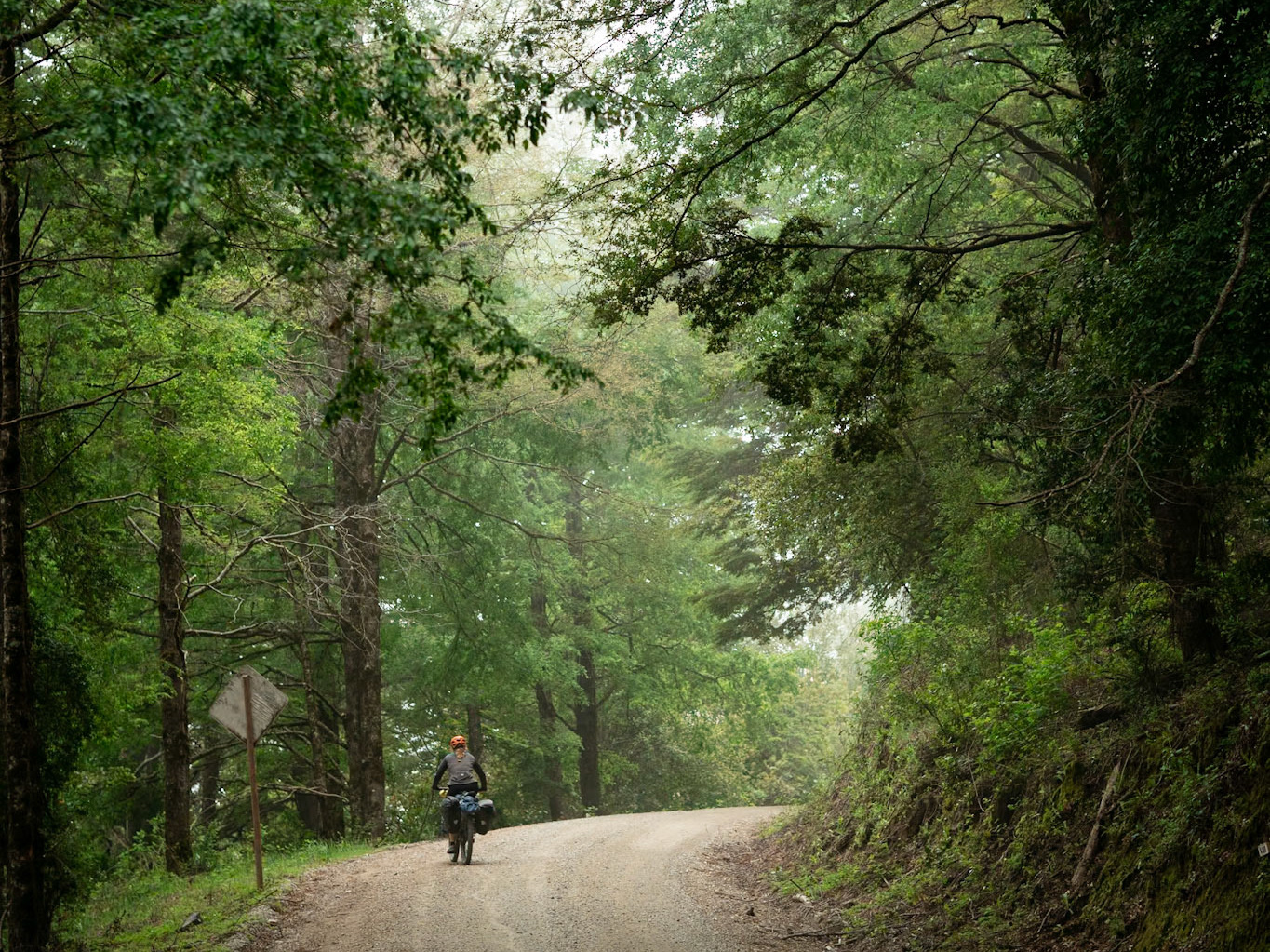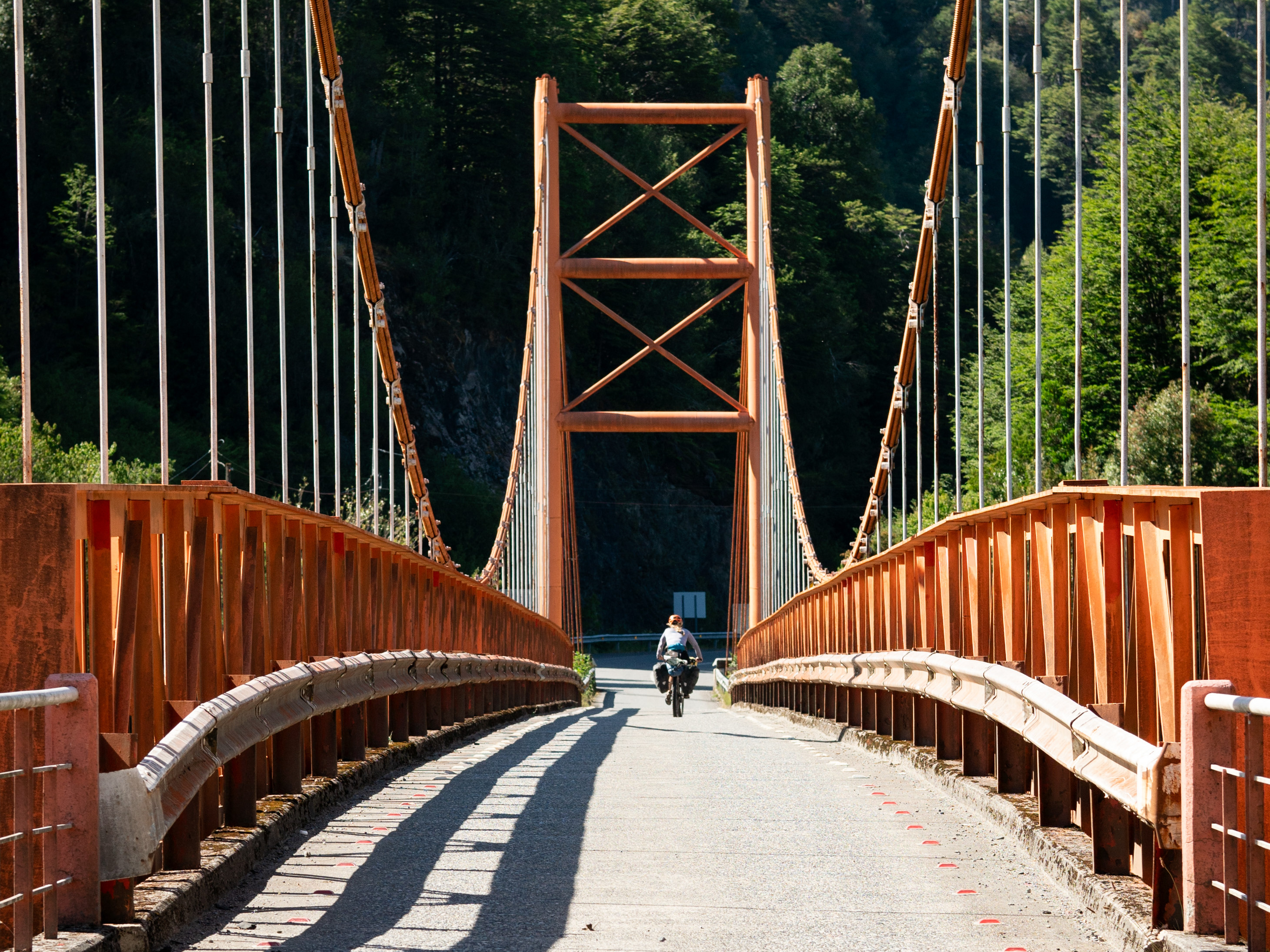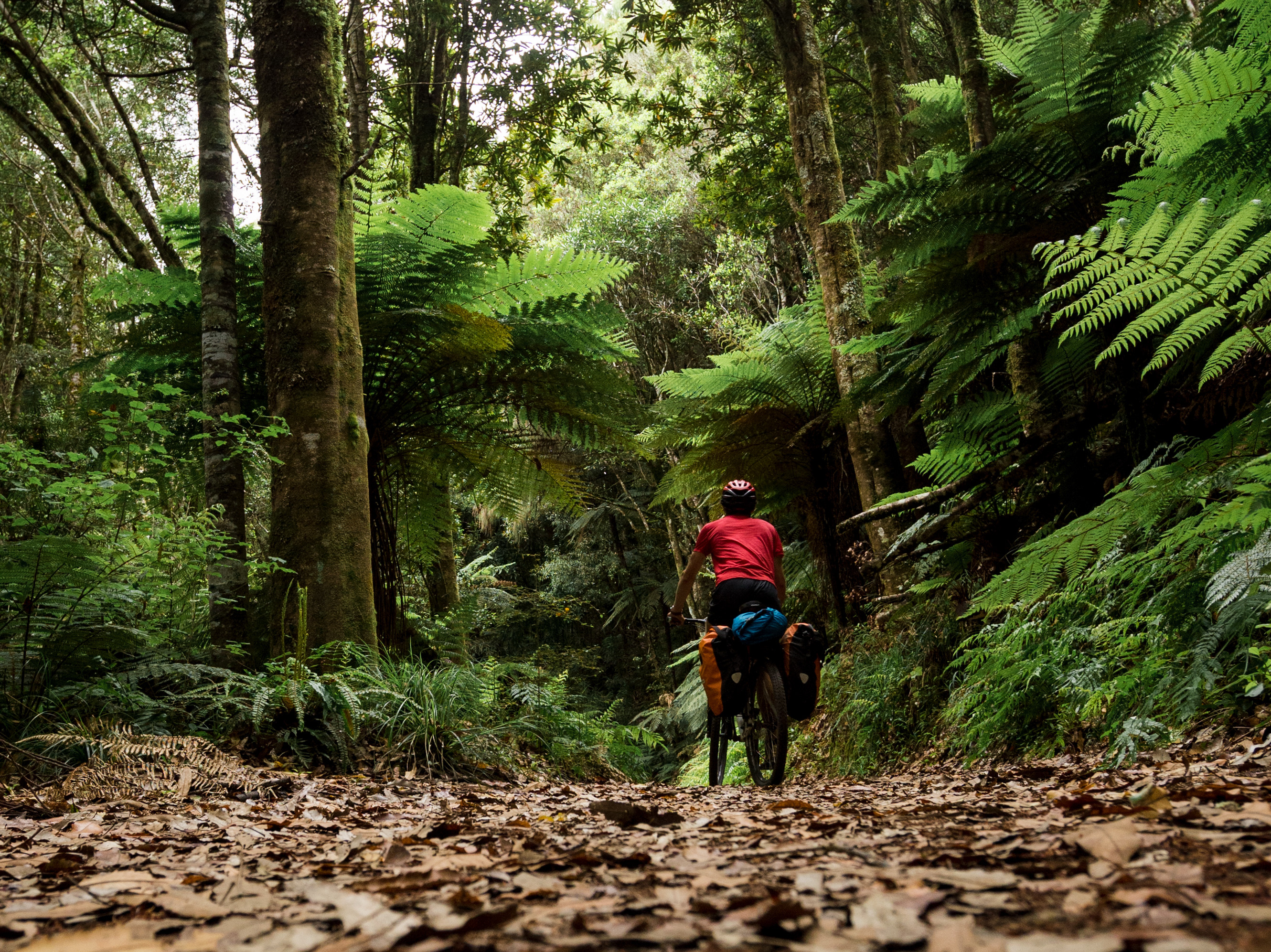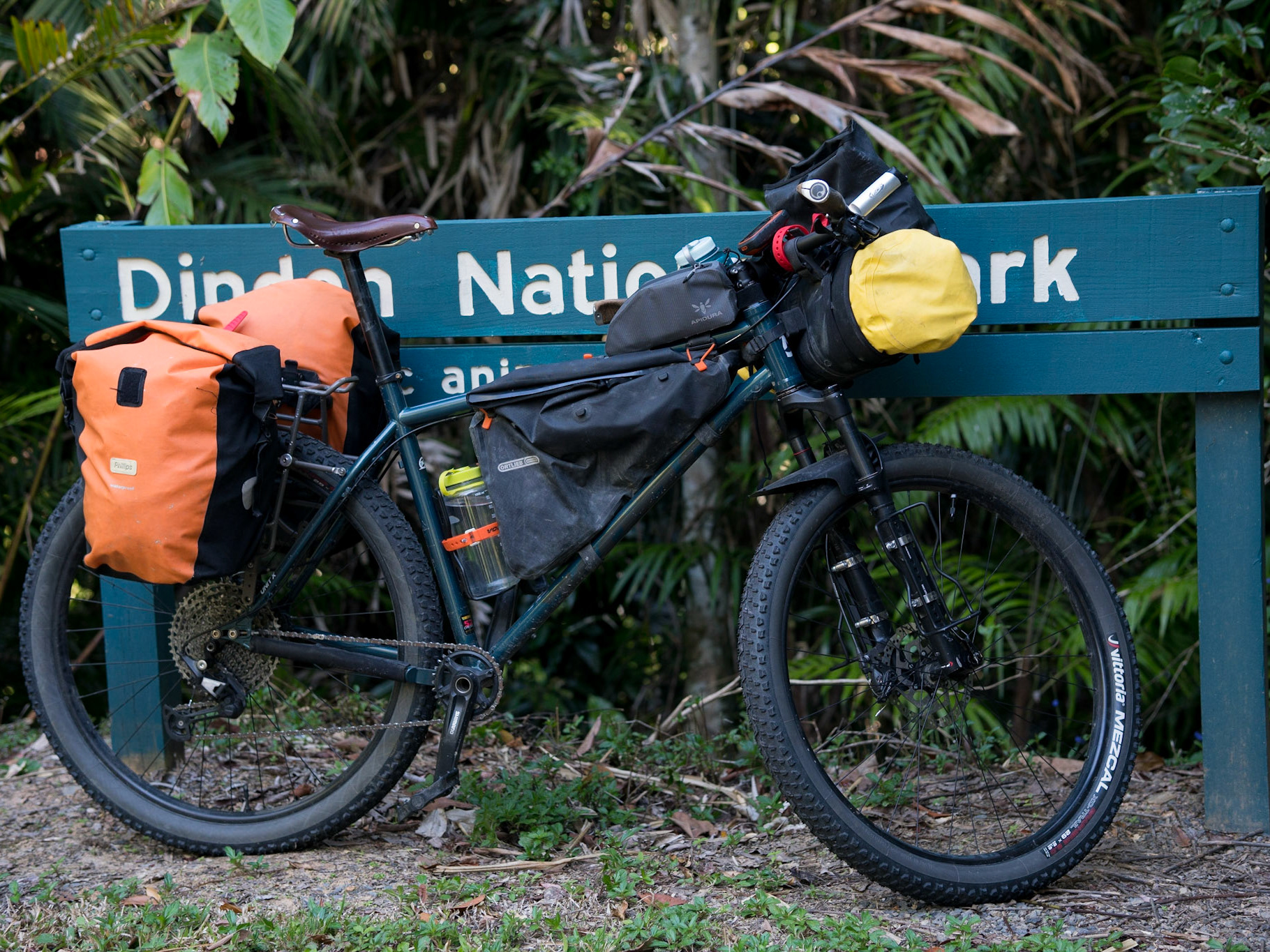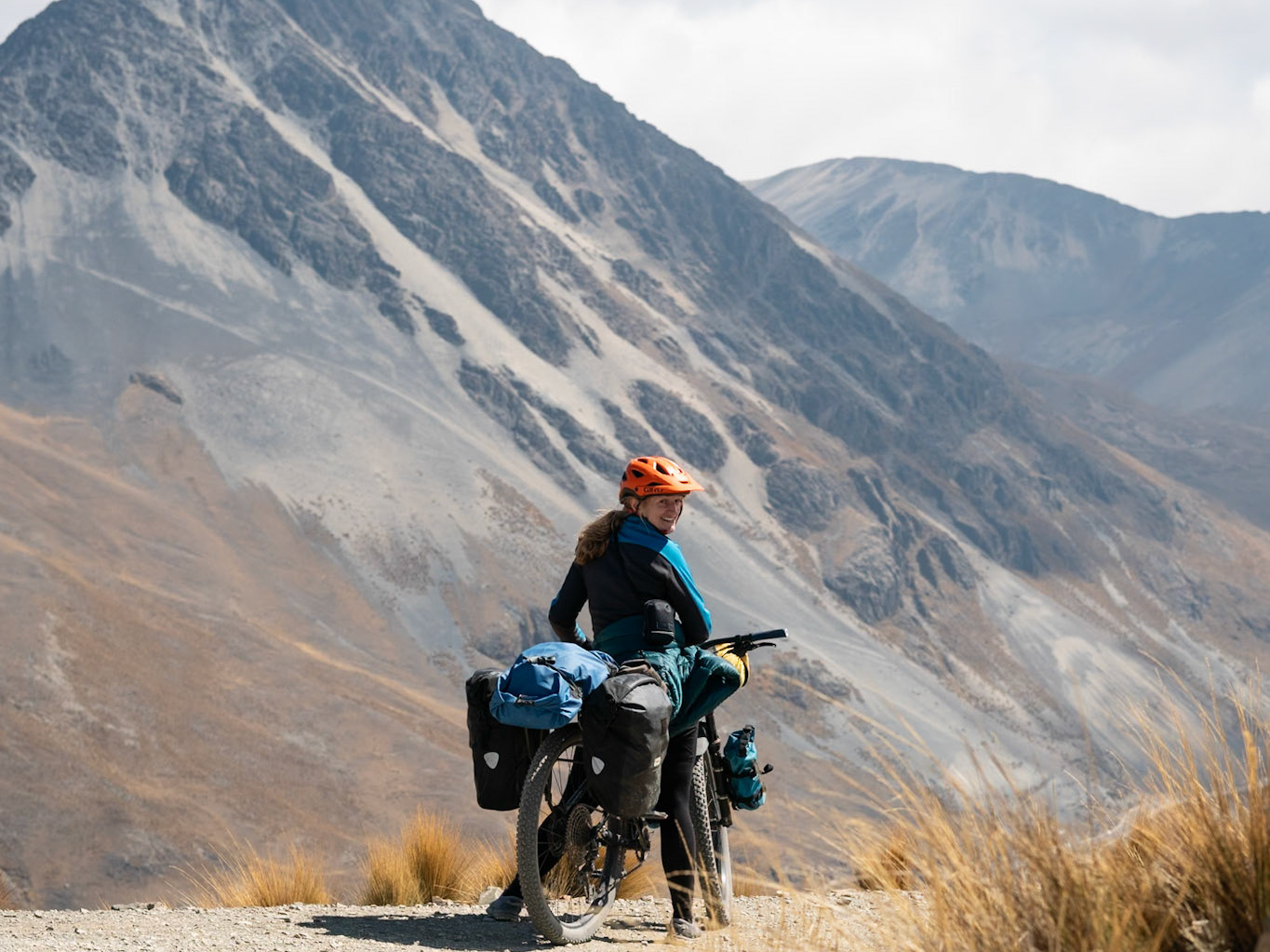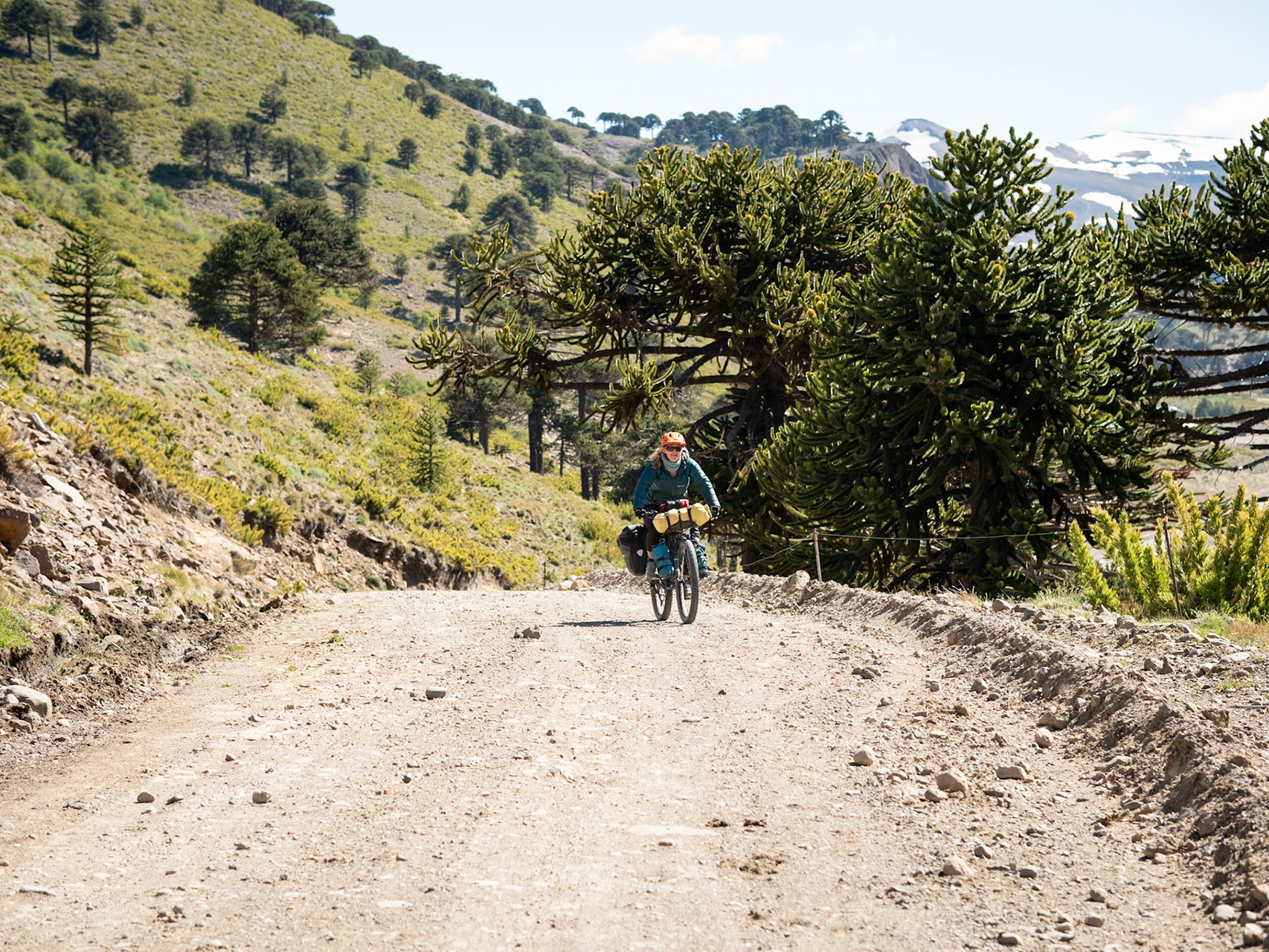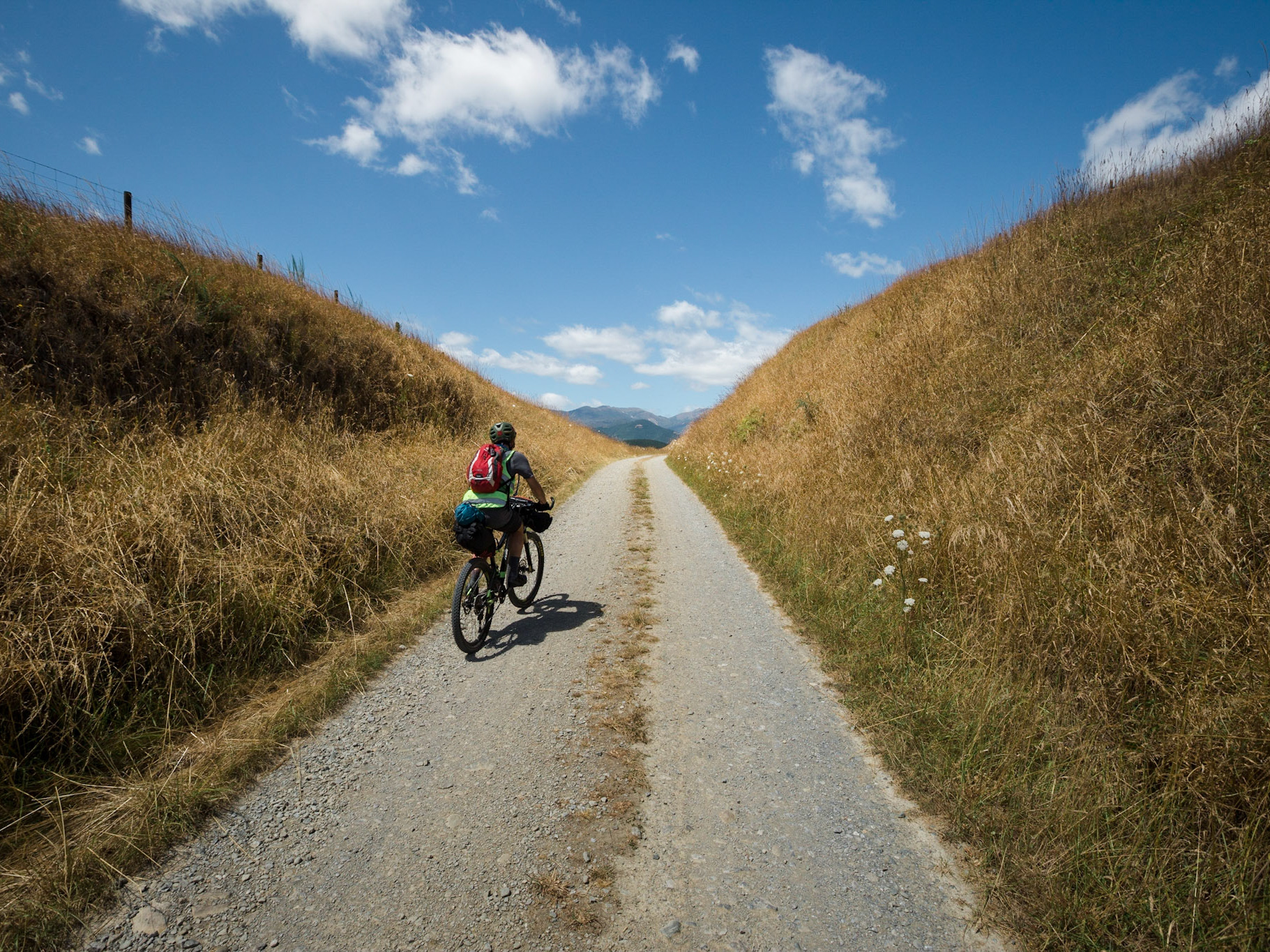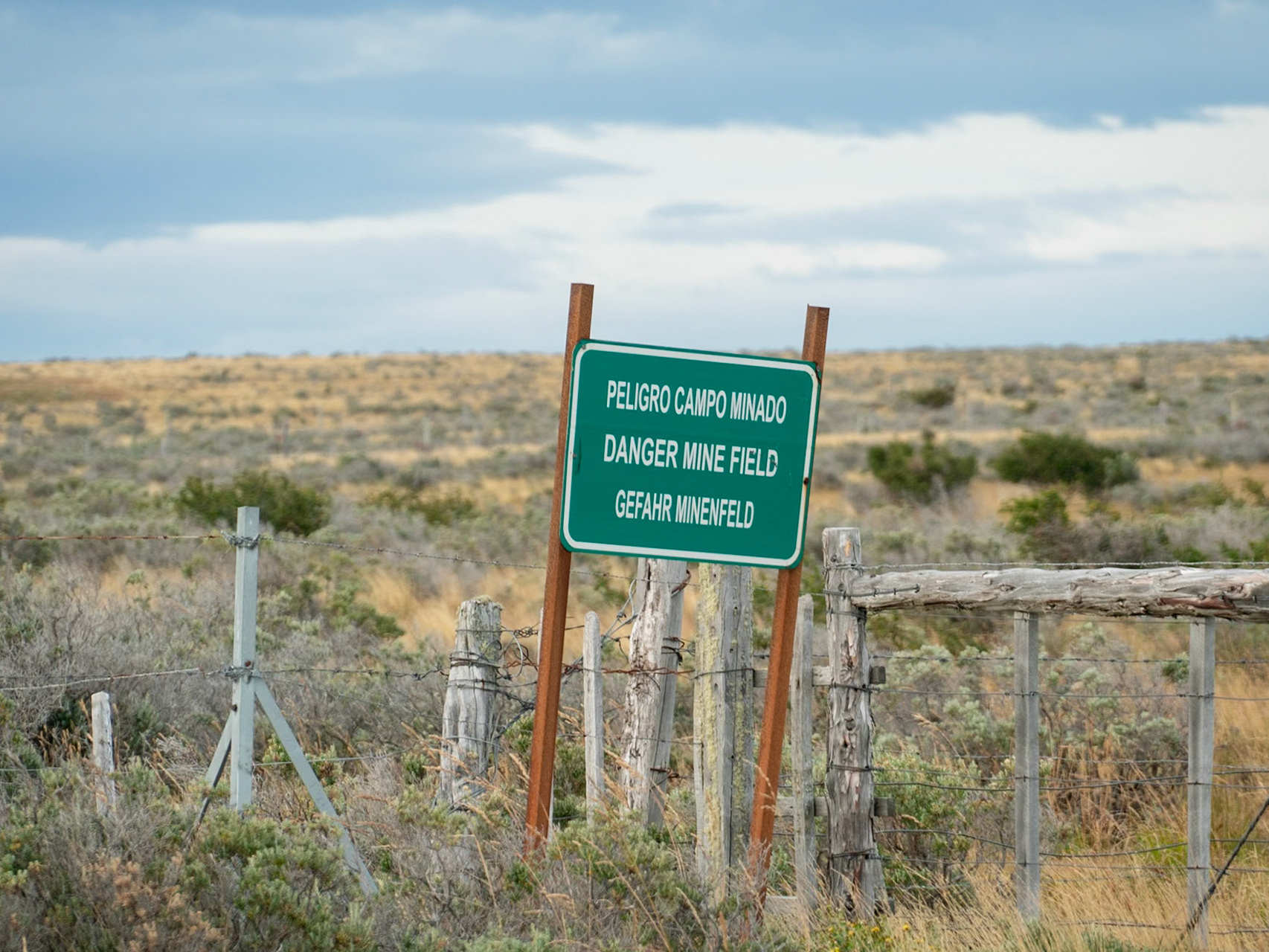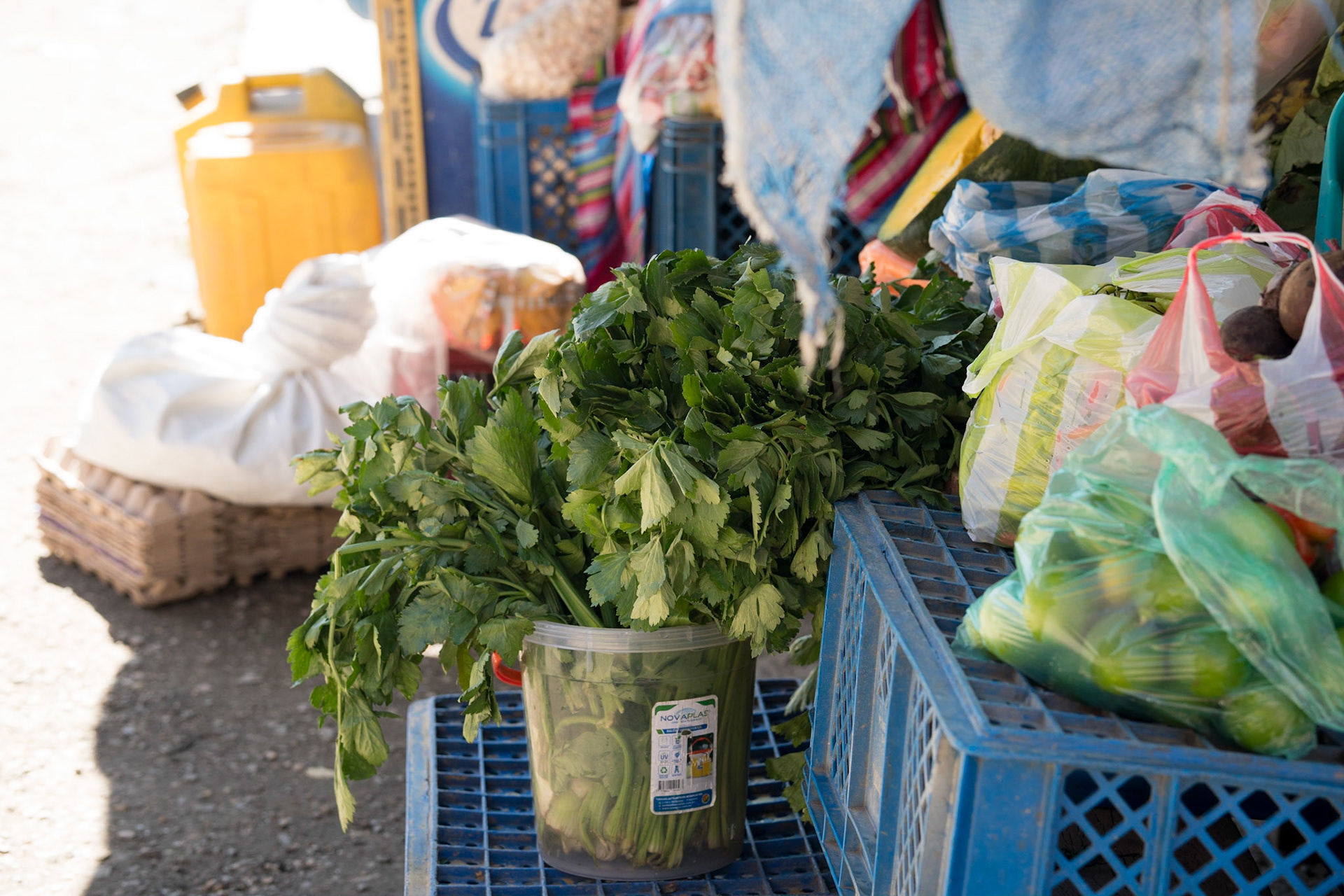
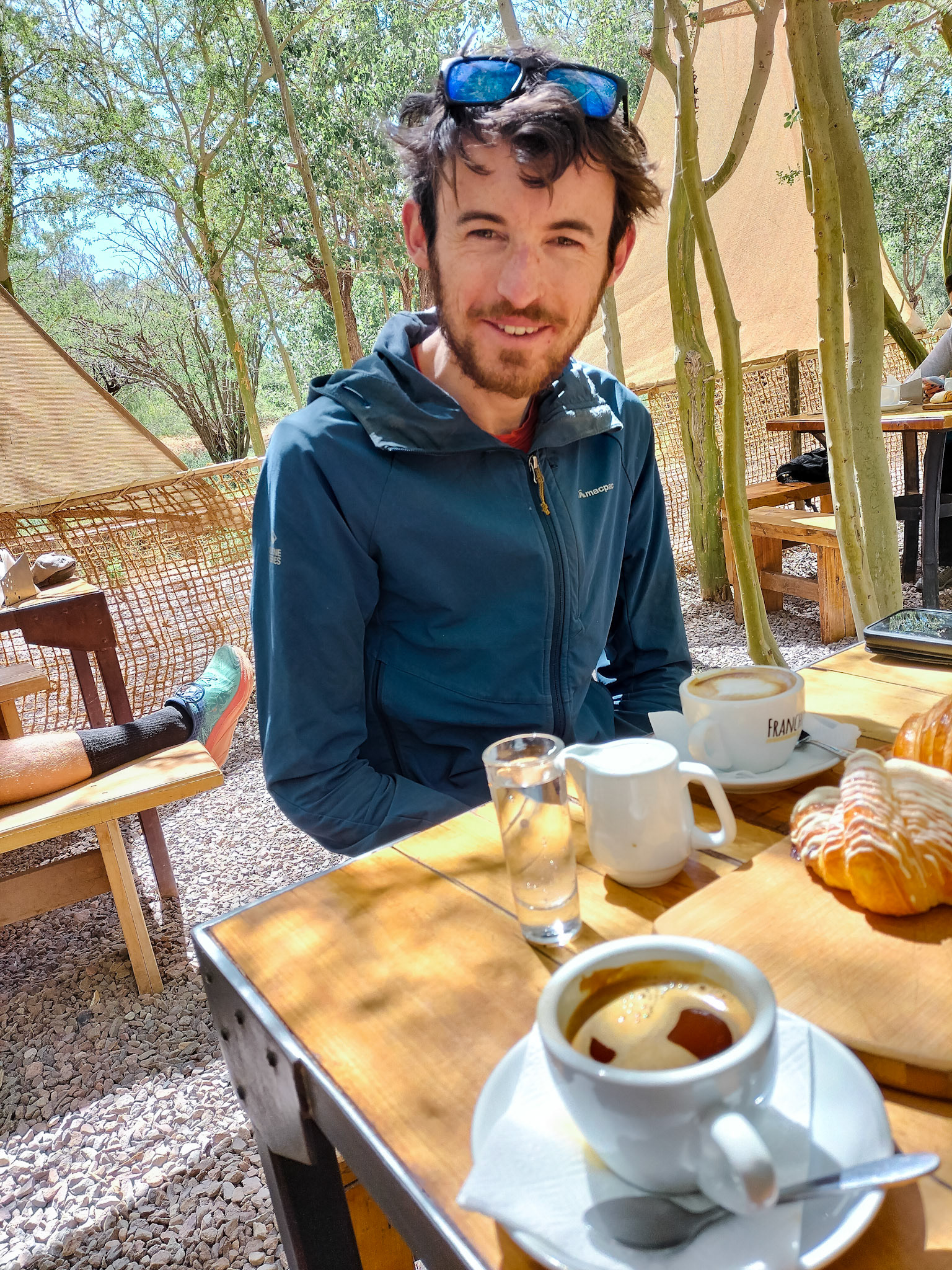
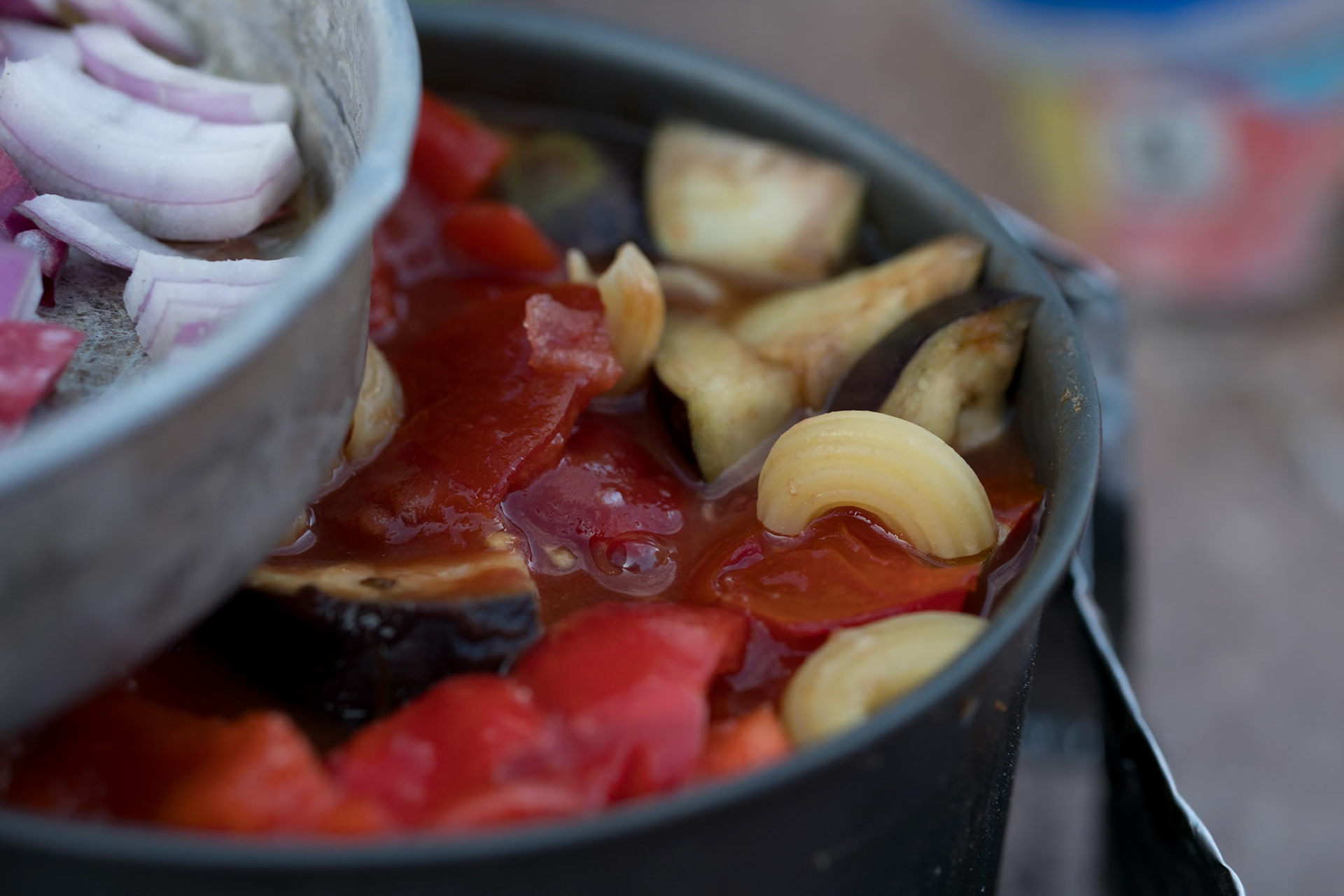
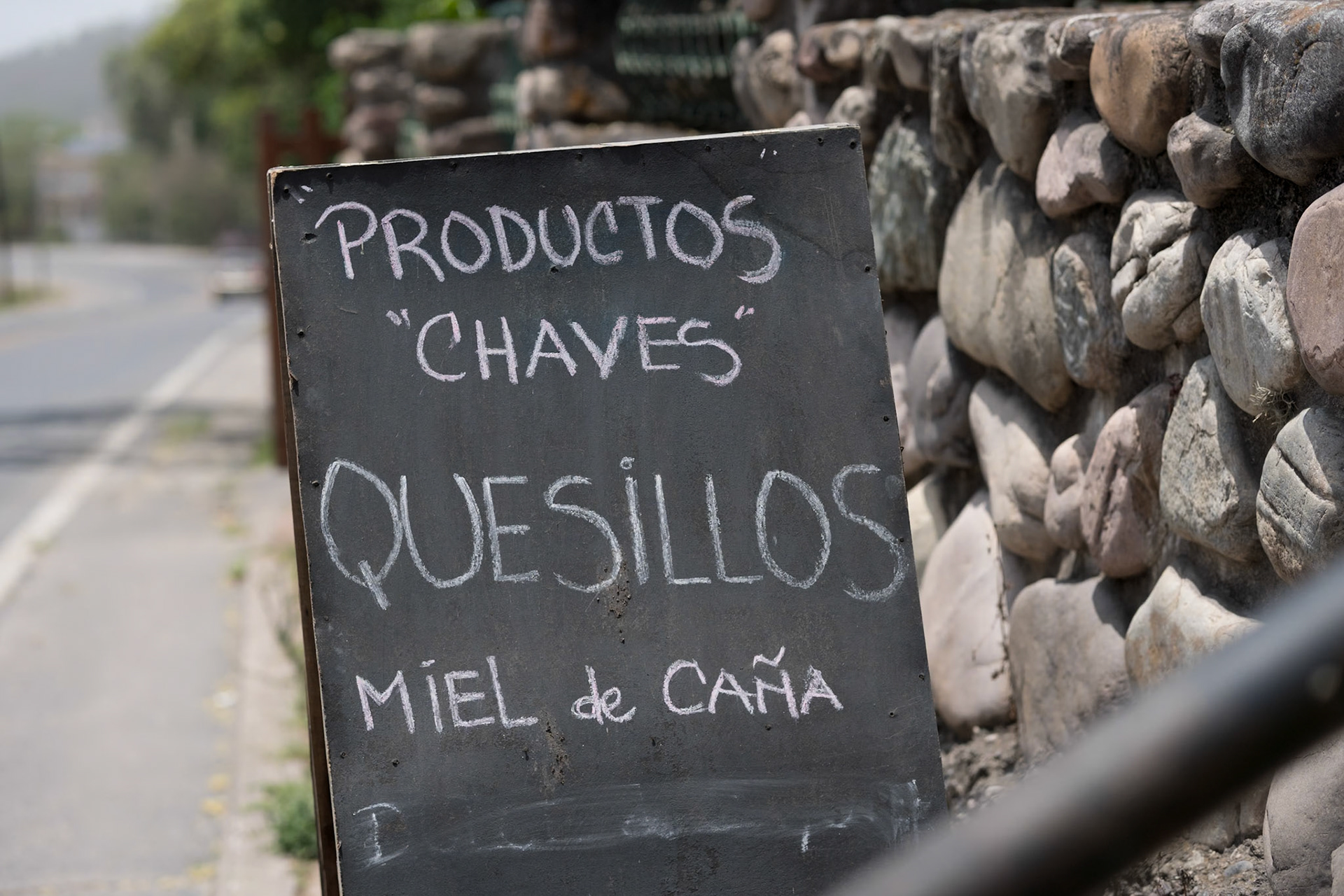


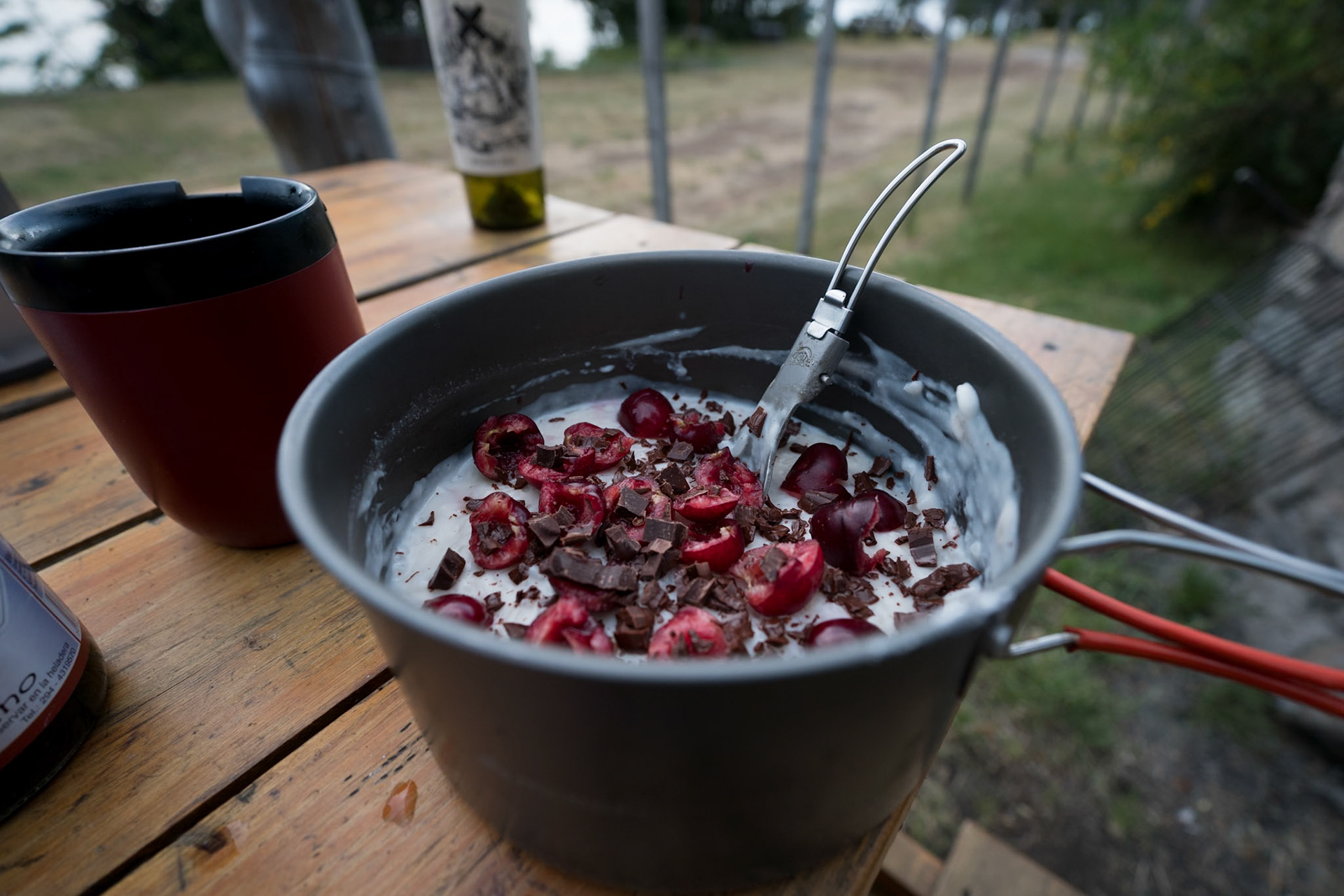
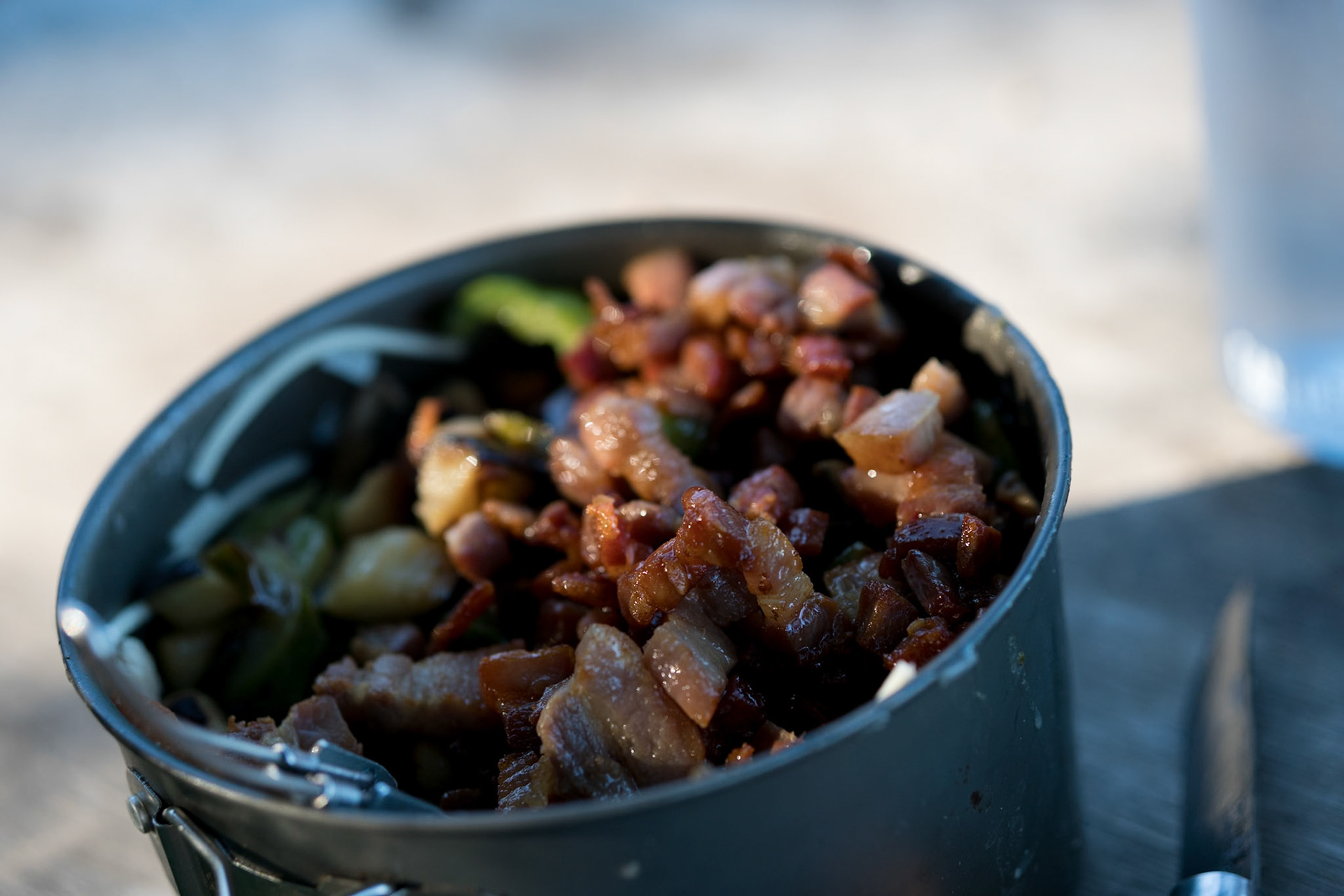
Quince paste and Kumara/sweet potato paste. Both priced here at their highest in the south of Patagonia, as they would often be half this up north. A blackberry variety 'Mora' was also available.
Using up Chia seeds before a border crossing with dark cocoa and cream! A serious powerhouse breakfast
Why worry about ultralight gear when you carry Peanut butter by the kilogram! Often only available in tiny 250gm jars (very good seals for re-use), an opportunity to get a decent supply for the desert sections could not go ignored. Unfortunately, as was the case in NZ 10 years ago, any peanut butter that was rarely available often was laced with sugar and 'vegetable' oil. It strikes me that this is completely unnecessary and a simple 100% ground peanuts paste would be far more desirable to all, but I suspect that poor quality and cheap low oil-content nuts are the reason it's needed.
Sometimes breakfast is pretty basic. Instant oats were more commonly available but provided too short a burst of energy. Wholegrain/ 'integral' 'entera' were much better for this but even just mixing in a decent amount of fat and protein with milk powder nuts and seeds would help.
A typical selection of 'food' available in the middle of nowhere. Not bad for a sprint race but not much for a sustainable diet. This example is the snack shelf at a small remote restaurant. Often there would also be pasta, packet tomato paste, tinned fish, dried lentils, rice and oddly-cheap dried ground parmesan.
Note that shops selling groceries had many names, the names have clearly different meanings but the meanings were ignored and often interchangeable. A 'supermercado' could be identical to a 'kiosco' or 'Drugstore' right next door. Arranged below by approximate usage from North to South: Tienda, Mercado, Minimercado, Drugstore, Despensa, Kiosco, Maxikiosco, Almacen.
The ideal lunch, non-existent in Bolivia, pretty easily found in North Argentina and then prohibitively expensive in the far south.
Margarine, a readily-available and energy-dense staple in Bolivia, was pretty miserable at first but in a hungry stretch was a life-saver.
A particularly grim lunch of jam and smashed crackers after a border crossing stripped us of anything fresh.
Bungees come in useful for baguette overflow
Down in the Patagonian south even rice became extremely expensive. Here 1kg of plain white rice is for sale at $5-10 NZD equivalent.
A common way of selling meat down south, alarming but at least seemingly safer than the 'wet markets' of Bolivia and Northern Argentina. We steered clear of the whole lot as much for hygiene as environmental and animal welfare reasons given what we saw travelling through the countryside.
Dehy Llama, a good idea but rather chewy and stringy with little flavour.
Argentine Asado, we're cooking dinner at 10pm...
Classic dahl and rice, cyclists staple
The presence of greens makes this a particularly rare and lush vegetable selection for the Altiplano.
Coriander/cilantro popped up often in Bolivia and in northern Patagonia and was always a welcome green
Bulgurwheat in a simple salad with some particularly rare fresh lettuce (lechuga) and cucumber (pepino)
DIY Queso and Morchella Empanadas on the road. For these we used pre-rolled empanada pastry which was readily available. A mixture of cheeses gets the best properties working together, I liked Queso cremoso for the creamy-melting-majority with a sharper Queso de Cabra or Roquefort mixed in to cut through. Similarly a small amount of lemon juice, garlic and/or spring onions cut through the cheese.
This required using the pot lid/pan as a sort of deep fryer with about 1cm depth of oil tipped into a corner. Above there is hardly any oil for the first ones and they stuck badly whilst not cooking through, it was later that we started the deep frying idea. Be careful it's super easy to burn yourself with this setup but it allowed us to make a few treats such as donuts and tortas fritas along the way. We don't have a pot gripper for the improvised lid/pan so we used the pocket knife pliers on the lid as a handle...precarious!
The usual approach, a soupy boil up of pasta and veges with a soup to be decanted. A 'frypan' of onions and occasionally some salami or sausages.
Fresh Raspberries on the roadside
Crackers and cheese, not all crackers being equal these dense seeded crackers travelled well and were high energy themselves
Roasted Peanuts, these ones were sold scooped from a wheelbarrow in a Bolivian streetmarket
Wild cherries
An experimental beer can meths-cooker in use in Tasmania to keep our MSR clean for the flight. Definitely a useful option but needs a fair amount of tweaking and the boil-times at sea level were grim (~15mins for 1l)
MSR setup before I made a new windshield
New windshield made from a foil roasting pan
The hard-working Sea to Summit bowl. Note the plastic spoon in use whilst the second spork was temporarily lost. Trying to explain the idea of a spork in stunted Spanish in an Argentine outdoor shop was met with baffled expressions and many back-and-forths to the back room producing either fork or spoon but alas no hybrid. Thankfully we found the lost one soon after.
